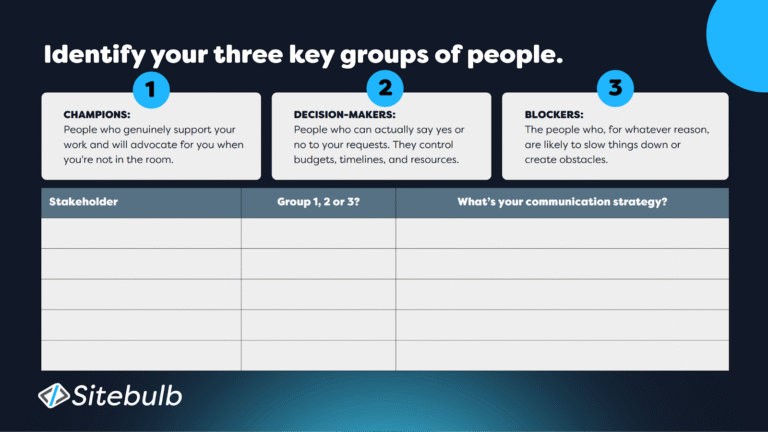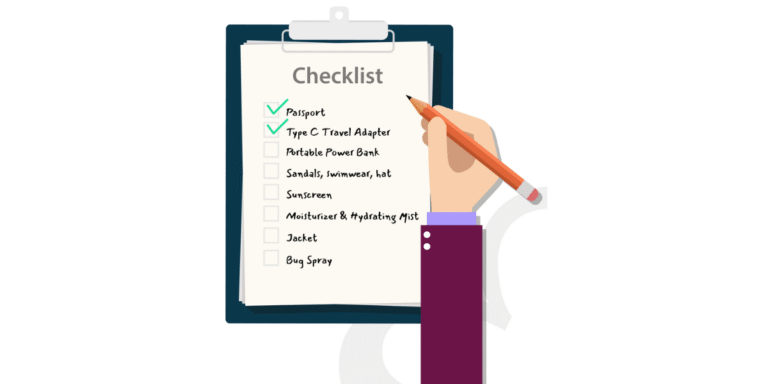We’re not going to get too deep into why competitive analysis matters just yet because that’s coming. But it’s worth saying now: the tools out there today can give you a kind of x-ray vision into your rivals’ strategies that marketers a decade ago would’ve killed for. Especially in a world where the-next-big-things explode and die in a week, that kind of leverage isn’t optional.
In this guide, we’ll cover the types of analysis you can run (and why they matter), the core functions to look for in these tools, and a curated list of the best competitor analysis platforms to try in 2025/26. We’ll finish by showing you exactly where these tools can fit into your strategy so you can turn raw data into moves that actually win.
Types of Analysis You Can Do and Why They Matter
Competitive analysis isn’t just about “keeping tabs” of intangible things. It’s about knowing the territory so you can choose the fastest, smartest path through it. In marketing, that means understanding what’s working for your competitors, what’s not, and where there’s a gap big enough for you to make your move. Without it, you’re flying blind; with it, you’re playing with super-sonic sight.
There is a catch though. Competitor analysis isn’t one thing, it’s a mix of different approaches depending on what you’re trying to uncover. The best marketers don’t just pick one method and stick with it; they layer them, using different types of analysis to cater to the needs of a company’s strategy.
Some of the most powerful types of competitor analysis include:
- Keyword Analysis: Spotting which keywords competitors are ranking for, targeting, and spending ad budget on so you can compete head-to-head or find untapped opportunities.
- Backlink Analysis: Understanding who’s linking to your competitors (and why) to strengthen your own SEO authority.
- Content Analysis: Breaking down the topics, formats, and distribution strategies that gets the most engagement for your rivals.
- Social Media & Engagement Tracking: Seeing what kind of content gets them likes, shares, and conversations.
- Pricing & Offer Analysis: Comparing product/service positioning, price points, and value-adds to see how you stack up.
- PPC & Ad Strategy Tracking: Revealing where competitors are spending, which creatives they’re running, and how often they rotate campaigns.
- Audience & Sentiment Analysis: Understanding who they’re reaching and how those people feel about them.
When you combine these you’re predicting their next move and setting the stage for your own. And that’s where the right tools come in: they make pulling all this data fast, accurate, and actionable.
Now after covering all these, what are you supposed to consider when choosing the right tool for you?
How to Choose the Right Competitor Analysis Tool
Not every competitor analysis tool is built to tend to the needs of every business. So picking the wrong one will be a huge waste of time and resources. We don’t want that. The right choice isn’t about which tool has the longest feature list; it’s about which one fits your goals, your budget, and your workflow.
Here’s what to keep in mind before you commit:
- Define your goal. Are you focused on SEO, content strategy, paid ads, or all of it combined? The more specific your aim, the easier it is to narrow down your options.
- Check data depth and accuracy. A slick interface is useless if the data’s outdated or incomplete. Look for tools with reliable sources and frequent updates.
- Consider integration with your existing stack. If it won’t talk to your CRM, analytics platform, or ad tools, you’re creating more manual work.
- Assess ease of use. A steep learning curve can kill momentum unless you have a dedicated analyst on the job. So be realistic on how much effort you want to put into it.
- Look at scalability. Can the tool grow with you, or will you outgrow its features in a year?
- Weigh the cost against ROI. The cheapest option isn’t always the best though overpaying for bells and whistles you’ll never use is just as bad.
Think of it like picking a teammate: you want the one who works best with the rest of your team and knows how to deliver exactly what you need.
So now is not the time to get shy but rather one to get brave and realistic. Now, saddle up cowboy, because we are about to see the best competitor analysis tools to try in 2025/26.
Top Competitor Analysis Tools to Try in 2025/26
Here are our top picks.
1. Similarweb

Similarweb is one of the best for market intelligence, giving you a panoramic view of your competitors’ online performance. From traffic sources and audience demographics to engagement metrics and referral partners, it turns raw data into clear competitive stories. You can be dissecting a rival’s growth strategy or looking for untapped channels, Similarweb’s reports are detailed enough for strategists yet digestible enough for quick decision-making.
Best For: Businesses and marketers needing deep website and market traffic insights.
Pricing: Free limited version; paid plans start around $167/month.
Where does it shine or rust?
Pros:
- Industry-leading web traffic data accuracy.
- Breaks down competitor audience behavior and acquisition channels.
- Covers both organic and paid traffic sources.
Cons:
- Pricing jumps significantly for advanced features.
- Limited historical data on lower-tier plans.
2. Crayon

Crayon is built for one thing: competitive intelligence at scale. It tracks your competitors’ digital footprints in real-time, from website changes to social content and product updates, then packages it into easy-to-digest insights. Perfect for companies in fast markets becuase Crayon doesn’t just collect data, it helps you spot trends and shifts before they hit the mainstream.
Best For: Mid-to-large businesses in competitive, rapidly evolving industries.
Pricing: Custom pricing based on needs.
Let’s cover its best and not-so-best qualities.
Pros:
- Real-time competitor monitoring across multiple channels.
- Excellent reporting and presentation-ready insights.
- Custom alerts for key changes.
Cons:
- Geared more toward enterprise budgets.
- Can feel like overkill for smaller teams.
3. Ahrefs

Ahrefs has long been a favorite for SEO professionals, but its competitive analysis capabilities do not disappoint either. It gives you an inside look at your competitors’ backlinks, keywords, and ranking strategies, all backed by one of the largest and most up-to-date data indexes in the industry. If you want to know exactly how competitors are driving organic traffic, Ahrefs is the play and it is easily trustable.
Best For: SEO-driven brands and agencies.
Pricing: Starts at $99/month.
Pros:
- Massive backlink database and keyword tracking.
- Intuitive interface for deep SEO insights.
- Accurate ranking and traffic estimations.
Cons:
- No free plan.
- PPC insights are limited compared to SEO depth.
4. Owler

Owler focuses on company-level competitive intelligence. It aggregates business news, funding announcements, acquisitions, and leadership changes so it is essentially giving you a real-time pulse on your competitors’ business moves. It’s less about SEO and more about understanding the bigger strategic picture.
Best For: Business development teams and market researchers.
Pricing: Free basic version; Pro starts at $99/month.
Here is why it deserves a place on this list.
Pros:
- Excellent for tracking competitor corporate activity.
- Daily email digests keep intel fresh.
- Easy-to-read company profiles.
Cons:
- Not designed for SEO or campaign-level analysis.
- Limited historical trend data.
5. SE Ranking

SE Ranking is an all-in-one SEO tool that’s friendly on both features and budget. Like, what? It offers keyword tracking, backlink monitoring, and competitor site audits, plus PPC analysis. And they are all wrapped in an interface that’s easy for newcomers to grasp. It’s a strong choice for small-to-mid teams who want solid competitive insights without breaking the bank.
Best For: Small businesses and agencies wanting affordable all-round SEO tracking.
Pricing: Starts at $55/month.
Here are some of the reasons why it is included in our list and what it can be a dealbreaker.
Pros:
- Wide feature set for the price.
- Customizable reporting.
- Includes PPC competitor research.
Cons:
- Smaller backlink index than Ahrefs or Semrush.
- Can be slower with large data sets.
6. BuiltWith
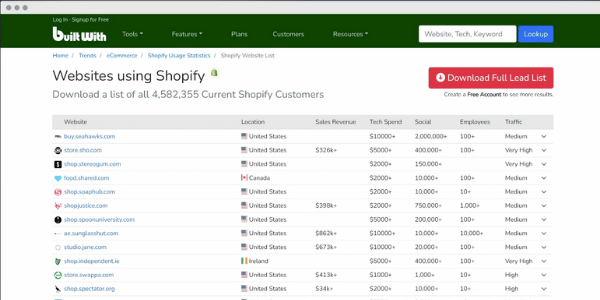
BuiltWith is your backstage pass to competitors’ tech stacks. Plug in any website, and it tells you exactly which tools, frameworks, and services they’re running. For sales teams, it’s a goldmine for targeting leads using specific technologies; for marketers, it’s an easy way to understand how rivals are executing online.
Best For: Sales prospecting and tech-focused market research.
Pricing: Free basic lookup; paid plans start at $295/month.
Pros:
- Detailed tech stack breakdowns.
- Large database covering millions of websites.
- Great for lead generation targeting specific tools.
Cons:
- Pricing is steep for casual use.
- Limited marketing data beyond tech insights.
7. HypeAuditor
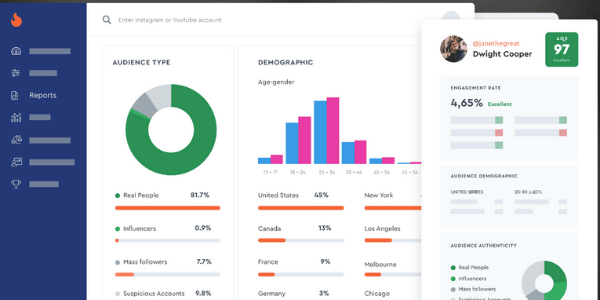
Originally built to detect fake followers, HypeAuditor has grown into a full influencer marketing intelligence suite. It reveals competitors’ influencer partnerships, audience quality, and engagement rates across Instagram, TikTok, YouTube, and more. If influencer campaigns are part of your strategy, this tool helps ensure you’re not flying blind.
Best For: Brands and agencies running influencer campaigns.
Pricing: Free limited plan; paid plans from $399/month.
Pros:
- Exceptional fake follower detection.
- Cross-platform influencer analytics.
- Strong reporting on campaign performance.
Cons:
- Pricey for smaller teams.
- Limited beyond influencer marketing scope.
8. Kompyte
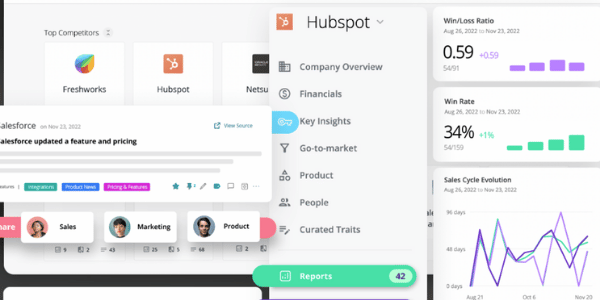
Kompyte is all about real-time competitive tracking. It monitors competitor websites, pricing changes, ad campaigns, and social activity then alerts you to shifts worth noting. It’s a great fit for teams that want a steady feed of competitive updates without spending hours digging and that is why it deserves a seat at this table.
Best For: Sales and marketing teams needing quick, actionable competitive intel.
Pricing: Custom quotes only.
Pros:
- Real-time alerts for competitive changes.
- Tracks across multiple channels.
- Strong automation for reporting.
Cons:
- Requires time to set up tracking parameters well.
- No public pricing transparency.
9. SpyFu
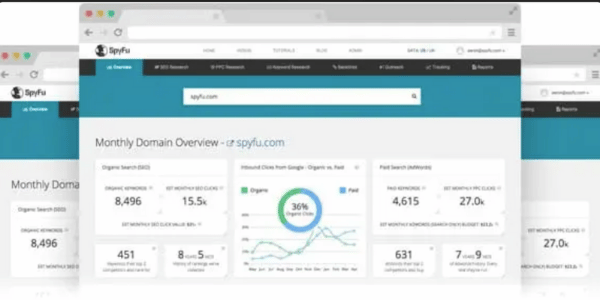
SpyFu is the tool for spying on competitors’ PPC and SEO strategies. You can see which keywords they buy, how much they spend, and which ads they’ve been running for months. It also shows their top organic keywords for a complete search picture.
Best For: PPC-focused marketers and SEO professionals.
Pricing: Starts at $39/month.
Pros:
- Excellent historical PPC data.
- Combines paid and organic insights.
- Affordable entry pricing.
Cons:
- Smaller backlink database than SEO specialists.
- Interface feels dated compared to newer tools.
10. Brandwatch
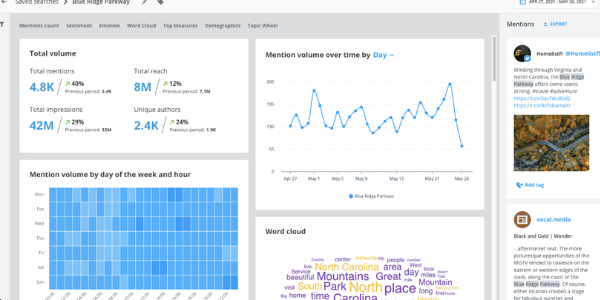
Brandwatch is a heavyweight in social listening and consumer intelligence. It monitors millions of online sources from social platforms to blogs and forums to uncover trends, sentiment, and conversations around your competitors. For brands that live or die by public perception, it’s an indispensable ally.
Best For: Brands that rely heavily on social presence and consumer insights.
Pricing: Custom pricing only.
Pros:
- Unmatched data coverage for social and web monitoring.
- AI-driven sentiment and trend analysis.
- Strong visual reporting tools.
Cons:
- Enterprise-level pricing.
- Steeper learning curve for beginners.
11. Mailcharts

Mailcharts is built for email marketers who want to see exactly how their competitors communicate with their audiences. It tracks their campaigns, frequency, subject lines, and design choices, giving you both creative inspiration and a clear sense of what’s working in your industry.
Best For: Marketers and e-commerce brands focused on email marketing optimization.
Pricing: Free limited version; paid plans from $79/month.
Pros:
- Large library of competitor email examples.
- Tracks cadence, design trends, and campaign types.
- Easy-to-use interface.
Cons:
- Limited to email marketing insights only.
- Smaller brands may find the pricing high for a niche tool.
12. Wappalyzer
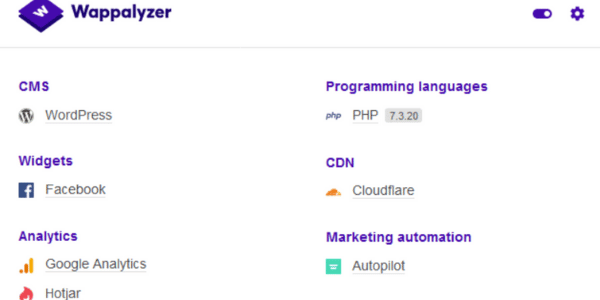
Wappalyzer instantly reveals what technology powers a competitor’s site. From CMS and analytics tools to payment systems and marketing platforms, it covers all. It’s especially useful for spotting tech trends in your industry and finding leads using specific software.
Best For: Sales, business development, and tech-focused research teams.
Pricing: Free limited lookups; paid plans from $149/month.
Pros:
- Covers thousands of technologies.
- Quick, no-frills insights.
- Useful for competitor profiling and prospecting.
Cons:
- Limited marketing data beyond tech stack.
- Pricing can add up if you need bulk lookups.
13. Majestic

Majestic specializes in one thing: backlinks. And it does it better than almost anyone. Its extensive link index lets you see where competitors are getting authority from, how their link profile has evolved, and which domains are worth targeting for your own outreach.
Best For: SEO professionals focused on link building.
Pricing: Plans start at $49.99/month.
Pros:
- Massive backlink database.
- Useful Trust Flow and Citation Flow metrics.
- Historical backlink data for long-term trend analysis.
Cons:
- Focused only on backlinks — no keyword or content analysis.
- Interface feels dated.
14. Sprout Social
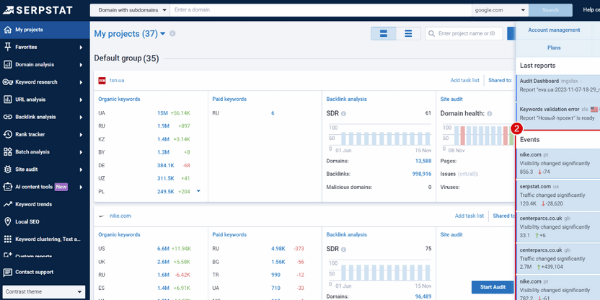
Sprout Social is a full-featured social media management platform with strong competitor tracking capabilities. You can compare engagement rates, posting frequency, and audience growth against competitors all while managing your own content calendar in one place.
Best For: Brands and agencies running multi-platform social media campaigns.
Pricing: Starts at $249/month.
Pros:
- Combines social management and competitive tracking.
- Clean, easy-to-understand reporting.
- Supports all major social platforms.
Cons:
- High pricing for smaller teams.
- Competitor tracking is limited to public data.
15. Serpstat

Back with another big gun, guys. Serpstat is an all-in-one SEO platform with strong competitor analysis tools for keywords, backlinks, and PPC campaigns. It’s especially appealing to budget-conscious teams who still want robust data across multiple marketing channels.
Best For: Small to medium businesses needing affordable multi-feature SEO tools.
Pricing: Starts at $69/month.
Pros:
- Combines SEO, PPC, and backlink analysis.
- Good value for the feature set.
- Easy project management tools for campaigns.
Cons:
- Smaller keyword database than bigger competitors.
- Limited integrations compared to premium platforms.
16. BuzzSumo
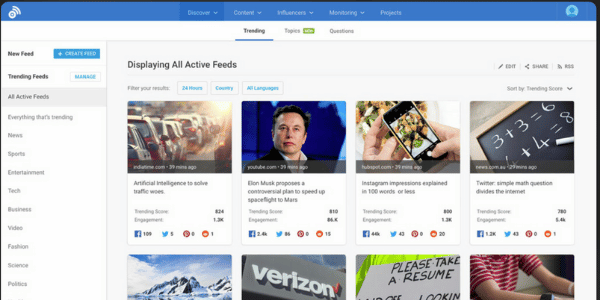
BuzzSumo is a must-have for content marketers. It shows you what topics are performing best for competitors, which formats drive engagement, and which influencers are amplifying their reach. It’s a goldmine for spotting content gaps and creating campaigns that outperform. The name is all extra fun.
Best For: Content and social media marketing teams.
Pricing: Free limited searches; paid plans from $119/month.
Pros:
- Great for discovering high-performing topics.
- Influencer identification tools built-in.
- Strong historical data for content trends.
Cons:
- Social data focus means less depth in SEO metrics.
- Pricey if you only need occasional research.
17. Brand24
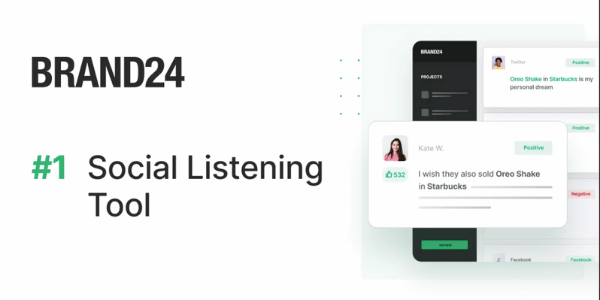
Brand24 is a social listening tool that tracks mentions of your competitors across the web in real time. It also offers sentiment analysis, so you know not just what’s being said whether it’s positive, negative, or neutral.
Best For: PR teams, marketers, and brands watching competitor reputations.
Pricing: Starts at $99/month.
Pros:
- Real-time mention tracking.
- Sentiment and influencer scoring.
- Covers social, news, blogs, and forums.
Cons:
- Limited historical data in lower-tier plans.
- Accuracy of sentiment scoring can vary.
18. iSpionage
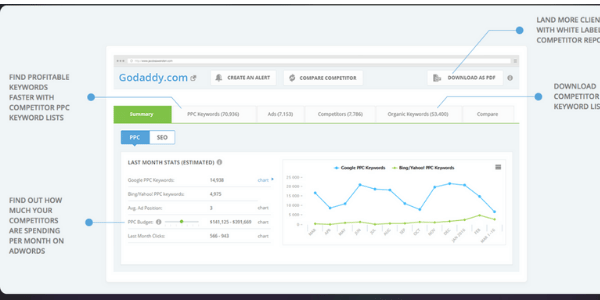
iSpionage focuses on PPC and SEO competitor research. It shows you what keywords your rivals are targeting, their ad copy, and even estimated spend which helps you optimize your own campaigns for efficiency and impact.
Best For: PPC advertisers and SEO teams.
Pricing: Starts at $59/month.
Pros:
- Combines paid and organic data in one platform.
- Useful ad copy tracking features.
- Competitive spend estimates help with budgeting.
Cons:
- Smaller dataset than top-tier PPC tools.
- Interface is less polished than competitors.
19. Semrush
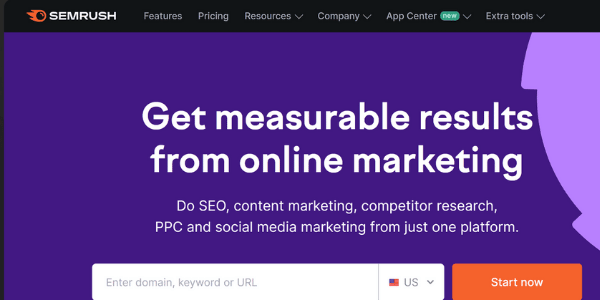
We saved some of the best for last. Semrush is one of the most versatile competitor analysis tools out there, covering SEO, PPC, content, and social media insights all in one dashboard. It’s an industry staple for a reason. Whether you want to audit competitor websites, dissect their ad strategies, or uncover new keyword opportunities, Semrush delivers at scale.
Best For: Agencies, large marketing teams, and power users who want all-in-one capability.
Pricing: Starts at $129.95/month.
Pros:
- Massive feature set across multiple marketing channels.
- Excellent keyword and backlink data.
- Constant updates and new features.
Cons:
- Can be overwhelming for beginners.
- Pricier than single-focus tools.
20. Moz
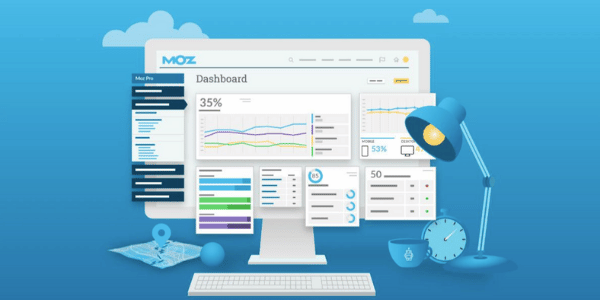
We are finishing off with a great pick. Moz is one of the most trusted names in SEO, and its competitor tracking features make it a worthy addition to this list. From rank tracking and keyword gap analysis to link profile comparisons, Moz offers reliable, easy-to-read data that even non-SEOs can grasp.
Best For: Marketing teams needing accessible yet powerful SEO insights.
Pricing: Starts at $99/month.
Pros:
- Beginner-friendly interface.
- Solid keyword gap and rank tracking tools.
- Helpful learning resources and community.
Cons:
- Smaller backlink database than Ahrefs or Semrush.
- Limited PPC data.
There you have it. The top 20 Competitor Analysis Tools for you to try (if you haven’t already).
Where to Apply These Tools in Your Strategy
Competitor analysis tools are only valuable if they are fed into real decisions. Start by defining who your true competitors are, both direct and indirect, then use the tools to map their traffic sources, content strategy, ad spend, and social activity. Look for patterns: which keywords keep them ranking, what type of content gets traction, which influencers they work with, and what technologies power their sites.
From there, turn insights into real action. Use the data to refine your SEO targeting, guide content topics, improve ad campaigns, adjust pricing, or identify new partnerships. The goal is never to copy what they’re doing, rather it’s to see the bigger picture, spot gaps, and move faster.
Final Words
Competitor analysis isn’t about chasing clout, it’s about taking control. The brands that win aren’t just reacting to what others are doing; they’re using competitive insights to set the pace and force the market to play by their rules. With the right tools, you can spot shifts before they happen, outplay established players, and carve out a space that’s unapologetically yours.
So don’t sit on the sidelines waiting to see what your rivals do next. Take control of the narrative, decide where the conversation is going, and make sure you’re the one leading it. Your competitors are already watching you, time to give them something worth studying.



